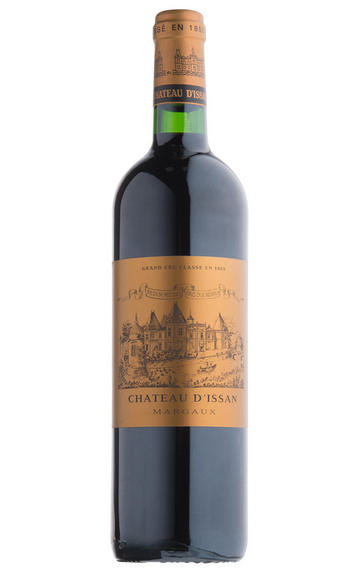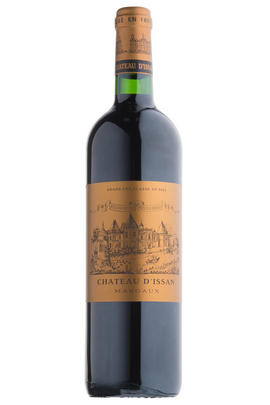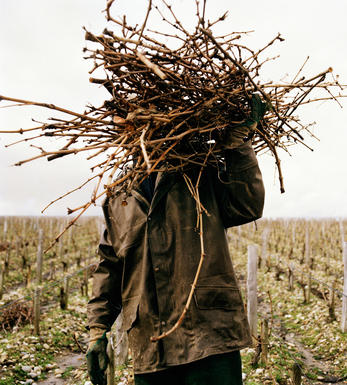
2020 Château d'Issan, Margaux, Bordeaux

Critics reviews
Drink from 2026 to 2055
Neal Martin, Vinous (May 2021)
Drink from 2035 to 2055
Antonio Galloni, Vinous (June 2021)
Drink from 2028 to 2045
Jane Anson, Decanter (April 2021)
Drink 2025 - 2045
Lisa Perrotti-Brown MW, Wine Advocate (May 2021)
Drink 2028 - 2045
James Lawther MW, jancisrobinson.com (May 2021)
James Suckling, jamessuckling.com (April 2021)
Jeb Dunnuck, jebdunnuck.com (May 2021)
Drink 2030 - 2055
Michael Schuster, The World of Fine Wine (May 2021)
About this WINE

Chateau d'Issan
Ch. d`Issan is a Third Growth Margaux property that produces about 100,000 bottles each year. Its richly aromatic and silky-textured Clarets are often amongst the best of the appellation.
The estate’s history dates back to the 1152 when the wine was officially served at the wedding of Eleanor of Aquitaine to King Henry II, the beginning of a special relationship between Bordeaux and England. The d’Essenault family owned the estate over five generations and rebuilt the existing château at the end of the 16th century. Surrounded by a moat, it is one of the oldest châteaux in the region and is frequently described as the most romantic in the Médoc.
In 1945 the Cruse family – already established in the Médoc for more than 150 years – purchased the property. Today Emmanuel Cruse runs the estate with the Lorenzetti family (owners of Chx Pédesclaux and Ladouys). They own 44 hectares in Margaux, planted with 62 percent Cabernet Sauvignon and 38 percent Merlot. The wine spends between 16 and 18 months in oak (around 50 percent new).

Margaux
If Pauillac can be seen as the bastion of ‘traditional’ Red Bordeaux, then Margaux represents its other facet in producing wines that are among Bordeaux’s most sensual and alluring. It is the largest commune in the Médoc, encompassing the communes of Cantenac, Soussans, Arsac and Labaude, in addition to Margaux itself. Located in the centre of the Haut-Médoc, Margaux is the closest of the important communes to the city of Bordeaux.
The soils in Margaux are the lightest and most gravelly of the Médoc, with some also containing a high percentage of sand. Vineyards located in Cantenac and Margaux make up the core of the appelation with the best vineyard sites being located on well-drained slopes, whose lighter soils give Margaux its deft touch and silky perfumes. Further away from the water, there is a greater clay content and the wines are less dramatically perfumed.
Margaux is the most diffuse of all the Médoc appelations with a reputation for scaling the heights with irreproachable wines such as Ch. Margaux and Ch. Palmer, but also plumbing the depths, with too many other châteaux not fulfilling their potential. There has been an upward shift in recent years, but the appellation cannot yet boast the reliability of St Julien. However, the finest Margaux are exquisitely perfumed and models of refinement and subtlety which have few parallels in Bordeaux.
Recommended Châteaux: Ch. Margaux, Ch. Palmer, Ch. Brane-Cantenac, Ch. Rauzan-Ségla , Ch. Dufort-Vivens, Ch. Ferrière, Ch. du Tertre, Ch. Giscours, Ch. d'Angludet.

Cabernet Sauvignon Blend
Cabernet Sauvignon lends itself particularly well in blends with Merlot. This is actually the archetypal Bordeaux blend, though in different proportions in the sub-regions and sometimes topped up with Cabernet Franc, Malbec, and Petit Verdot.
In the Médoc and Graves the percentage of Cabernet Sauvignon in the blend can range from 95% (Mouton-Rothschild) to as low as 40%. It is particularly suited to the dry, warm, free- draining, gravel-rich soils and is responsible for the redolent cassis characteristics as well as the depth of colour, tannic structure and pronounced acidity of Médoc wines. However 100% Cabernet Sauvignon wines can be slightly hollow-tasting in the middle palate and Merlot with its generous, fleshy fruit flavours acts as a perfect foil by filling in this cavity.
In St-Emilion and Pomerol, the blends are Merlot dominated as Cabernet Sauvignon can struggle to ripen there - when it is included, it adds structure and body to the wine. Sassicaia is the most famous Bordeaux blend in Italy and has spawned many imitations, whereby the blend is now firmly established in the New World and particularly in California and Australia.


Buying options
Add to wishlist
Description
Cabernet Sauvignon 55%, Merlot 39%, Petit Verdot 2%, Malbec 1%
Cabernet Franc, Petit Verdot and Malbec all appear for the first time ever, following the purchase of a parcel of old vines from neighbouring Pontac-Lynch in 2020. There’s also less Cabernet Sauvignon than usual, resulting in a beautifully juicy, open and positive wine. It’s not at all overdone – indeed, just the reverse. On the palate, there’s a silky, alluring texture from the old-vine Merlot of the walled L’Enclos. There’s more detail in the structure, perhaps from the new varieties. This is a new chapter, thinks Emmanuel Cruse – and a sumptuous vintage.
Drink 2027-2042
wine at a glance
Delivery and quality guarantee